Pisa is a charming Italian city and popular for its stunning architecture, history and culture. It is famous for the Leaning Tower, but it is much more than just that. Pisa has a lot to offer, and it is a great experience just wandering around the city. If you are planning a trip to Italy, make sure you add Pisa to your itinerary! In this article, I will take you through the best monumental highlights to visit in Pisa to enrich your trip with unique architectural masterpieces, fascinating history and culture.

Table of Contents
Piazza dei Miracoli
The Piazza dei Miracoli is a complex that consists of four main structures: The Leaning Tower of Pisa, the Cathedral, the Baptistery, and the Camposanto Monumentale or the monumental cemetery. The complex is located in the heart of Pisa and is surrounded by a green lawn, making it an ideal spot for tourists to relax and admire the breathtaking architecture. Piazza dei Miracoli is also known as the Square of Miracles, which is a UNESCO World Heritage site.

Baptistery of Saint John
The shape of the Baptistery of St. John is undoubtedly one of the most distinguishing features of this historic site. This building’s octagonal shape comes from the early Christian baptistery’s architectural style, which was circular. The octagonal design of the structure became popular during the medieval age. The building’s height is 54 meters, and its diameter measures 34 meters. The exterior walls are clad with white Carrara marble, with sculptural details on the columns and brackets.
The pulpit
The pulpit of the Baptistery of St. John is another fascinating feature. It was created by Nicola Pisano in 1260. Its structure is made from Carrara marble and is decorated with scenes of the life of Jesus. The pulpit was used for preaching and baptismal rites and was the focal point of the baptistery. Nicola Pisano was one of the greatest sculptors of his time, and the Baptistery of St. John is one of the few sites where visitors can still see his works.
The acoustics
The acoustics of the Baptistery of St. John are amazing and visitors are often entertained by local musicians. The dome of the Baptistery of St. John creates an echo that makes sounds and music resonate melodiously. It is an incredible experience to watch musicians play under the dome and listen to the music around the Baptistery.
The historical significance
The Baptistery of St. John has historical significance as it tells the story of Christianity in Pisa. The baptistery served as a religious structure for baptisms and ceremonies during the Christian era. The site is therefore closely related to Pisa’s religious history and holds a critical place in the religious identity and culture of the city.
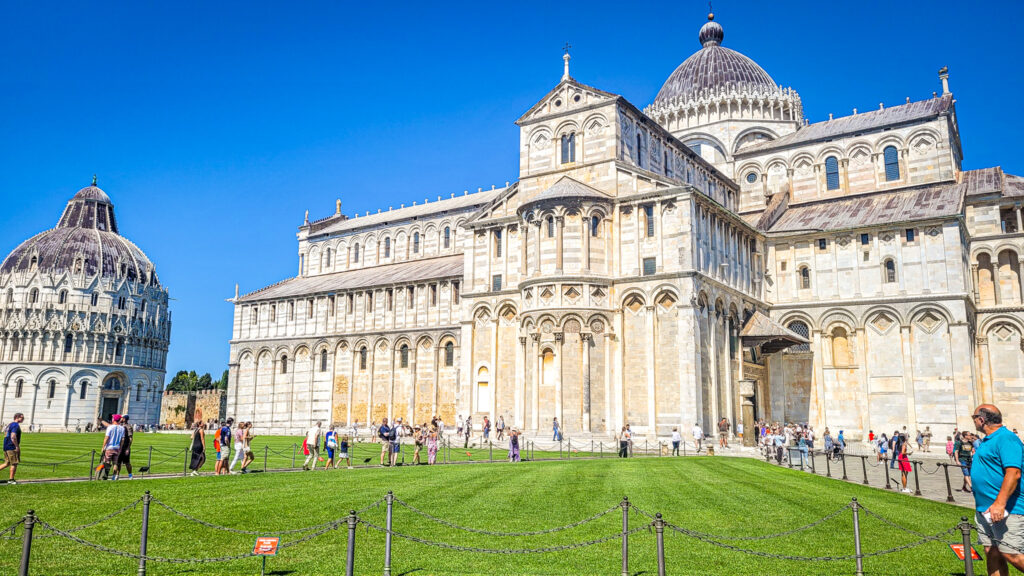
Torre di Pisa
The Tower was built in the 12th century with a primary purpose of being a bell tower. The shift in soil and the inadequate foundation was causing the Tower to lean. As a result, the restoration of the Tower began in 1990 and was completed in 2001. The architects were keen to preserve the history of the Tower and stabilize it while preventing further lean. The fascinating part is that the slightest amount of lean has been preserved to retain its historical significance.
The Tower is 56 meters high with eight levels. The structure has a spiral staircase of 294 steps leading up to the bell chamber. The design of the Tower is of Romanesque and Gothic influence and made out of white marbles. The structure is decorated with detailed geometric patterns and illustrations of animals. The bell chamber is made of wood and houses seven bells, which gives a unique sound to the area.
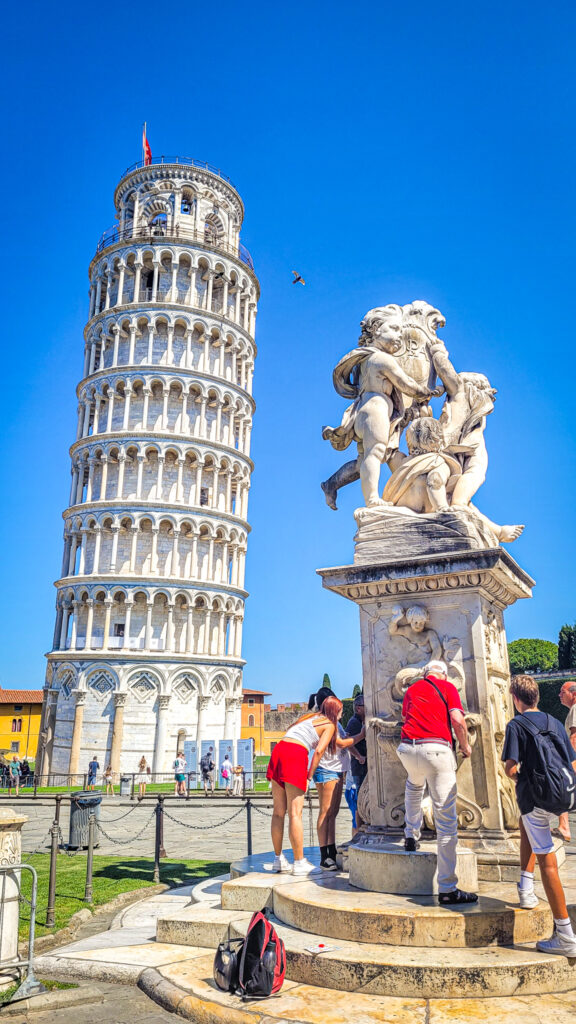
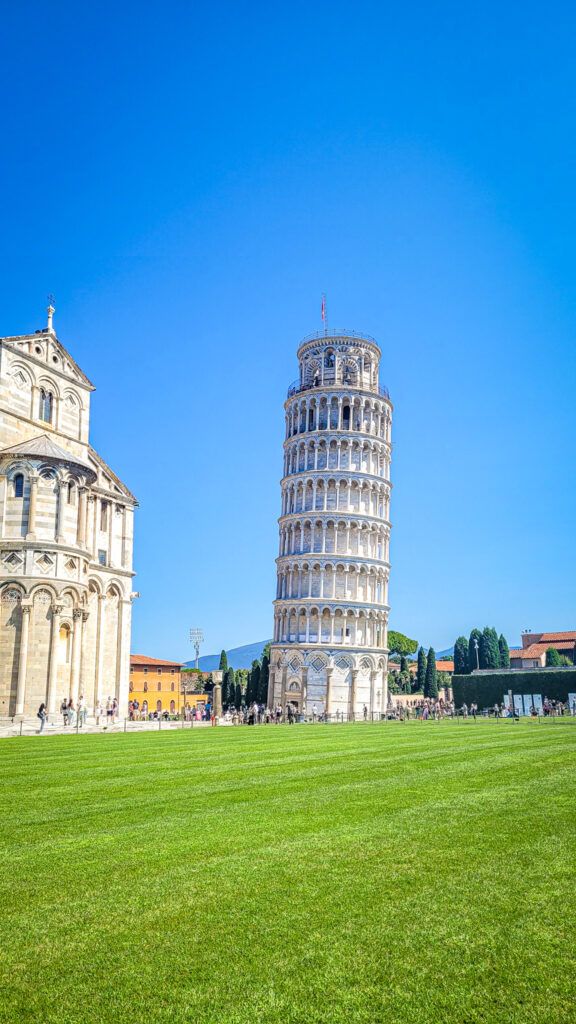
Mura di Pisa
At the height of its power Pisa was a major naval force in the Middle Ages. The city officials decided to build fortified walls to protect themselves from external threats. Construction of the Mura di Pisa began in the 12th century and it gradually expanded over the next few centuries. The walls stretched over a distance of 3.5 km, making it one of the largest fortification systems in Italy. The wall was built using stone blocks and bricks in a distinctive Pisan and Lombard Romanesque style.
Destruction of the wall
In the mid-16th century, Pisa was conquered by the Medici family who had a different view of the wall’s purpose. They saw it as a symbol of military weakness and an obstacle to city development. They started to demolish the wall’s structures that appear outdated. The project went on for more than 160 years, and the destruction of the wall was only stopped in 1893 due to pressure from concerned citizens. Today, around half of the wall is still standing.
Romanesque architecture
The Mura di Pisa is not only a fortification system but also a great example of Pisan and Lombard Romanesque architecture. The wall’s shape was a result of the topography of the land and the purpose of the fortifications. The walls were not only designed for defensive purposes, but they also have many towers that project from them, allowing an excellent view of approaching enemies. The walls also allowed entrance through gates which are beautifully decorated to show off the city’s wealth and power.
Walking around the Mura di Pisa is an adventure in itself. The walls were not just built to protect the city but also to aid movement within the city. Even today, there are stone stairs and terraces that climb up and down the walls, providing extraordinary views over Pisa. Visitors can follow the walls from the ancient Arno river port up to the Pisa train station, rewinding history as they go along.
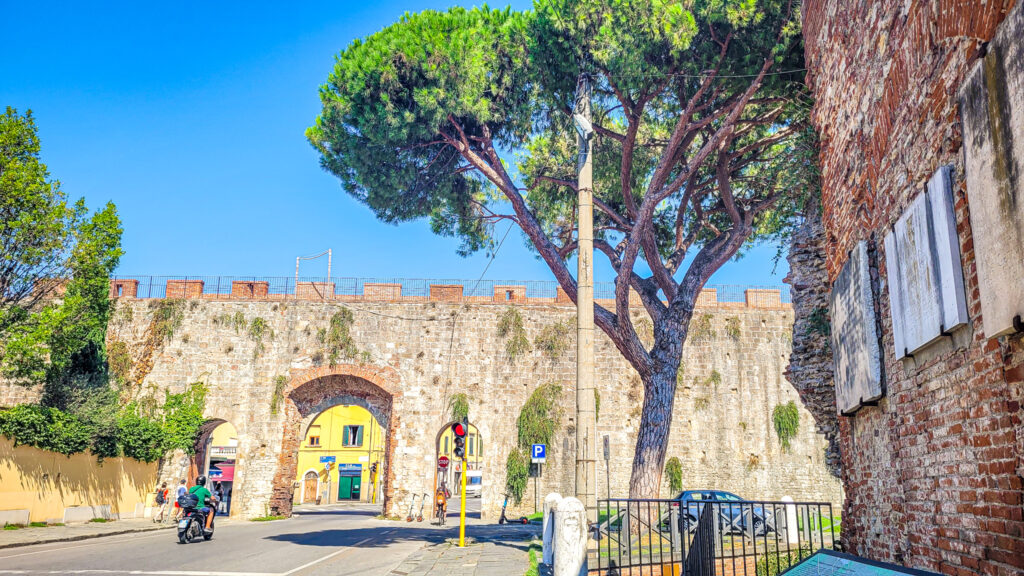
Bagni di Nerone
The Bagni di Nerone means “Hot springs of Nero“. It was constructed during the Roman Empire and served as thermal baths for the locals. The complex features a network of underground tunnels that lead to a natural source of hot water. The temperature of the water could reached up to 40 degrees Celsius. The thermal waters of the Bagni di Nerone were believed to have healing powers and were used to treat a variety of ailments. Over time, the thermal baths gained immense popularity and attracted the attention of many notable figures. Including the infamous emperor Nero himself.
As the popularity of the Bagni di Nerone grew, so did the desire to expand the complex. In the fourth century AD, a new structure was built on top of the original thermal baths. The baths were decorated with beautiful mosiac tiled floors. The mosaic, which is made up of millions of tiny tesserae, depicts a variety of sea creatures and marine life. It was a masterpiece of ancient Roman art.
The Bagni di Nerone was abandoned during the Middle Ages and remained undiscovered until the 19th century when excavations began. The complex was later restored in the early 20th century. The Bagni di Nerone offers visitors a glimpse into the rich history and culture of ancient Rome. The old ruins are a testament to the sophistication and brilliance of ancient Roman engineering and architecture.
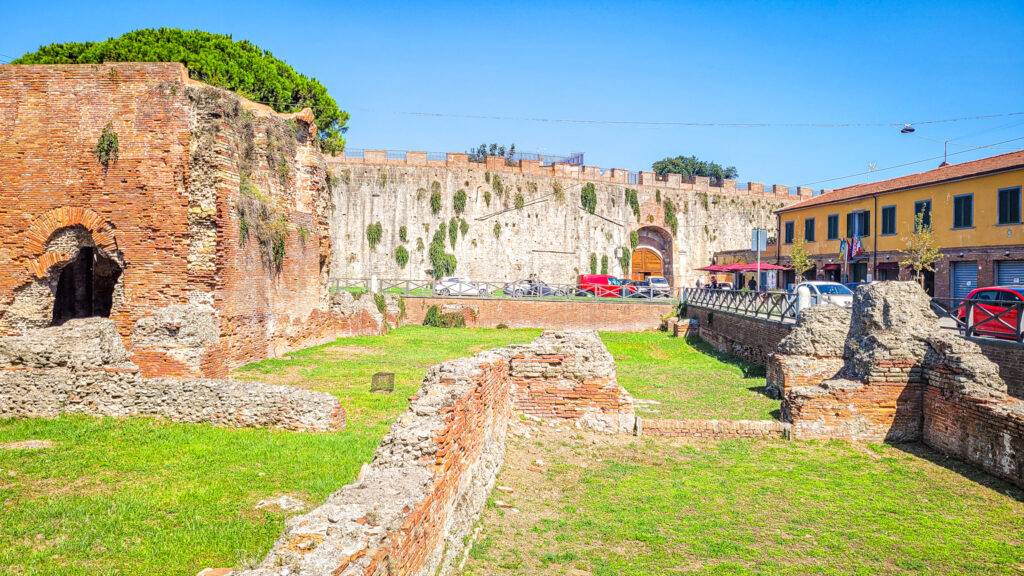
Santa Caterina d’Alessandria church
The Santa Caterina d’Alessandria may be small in size, but its architecture and design are gorgeous. The church is characterized by its various styles, including Gothic, Renaissance, and Baroque. The different styles blend seamlessly to create an authentic and unique ambiance. Inside the church, the details on the walls and ceiling are real masterpieces. The artwork is notable for its composition and rich colours, and the ceiling frescoes are some of the most exquisite in Tuscany.
The history of this church is also fascinating. The original church was built in the 10th century and was dedicated to St. Stephen. After the arrival of Dominican friars in Pisa, the church was given to the order of St. Catherine of Alexandria, and the church became dedicated to her. Over time, the church underwent several renovations and changes in design that eventually gave rise to its present appearance.
Another highlight of the church is its bell tower, the Bellanda Tower. The tower was built in the 16th century and is regarded as one of Pisa’s iconic landmarks. The tower has a beautiful design with a cylindrical body and a conical roof with a height of 51 meters.
The church also has several notable chapels, like the sacristy, the chapel of St. Catherine, and the chapel of St. Antoninus. Each of these chapels has unique stories and art pieces that signify historical and cultural events in Pisa. For instance, the Chapel of St. Catherine houses the famous painting “Madonna and St Catherine” by Aurelio Lomi, a 16th-century painter from Pisa.
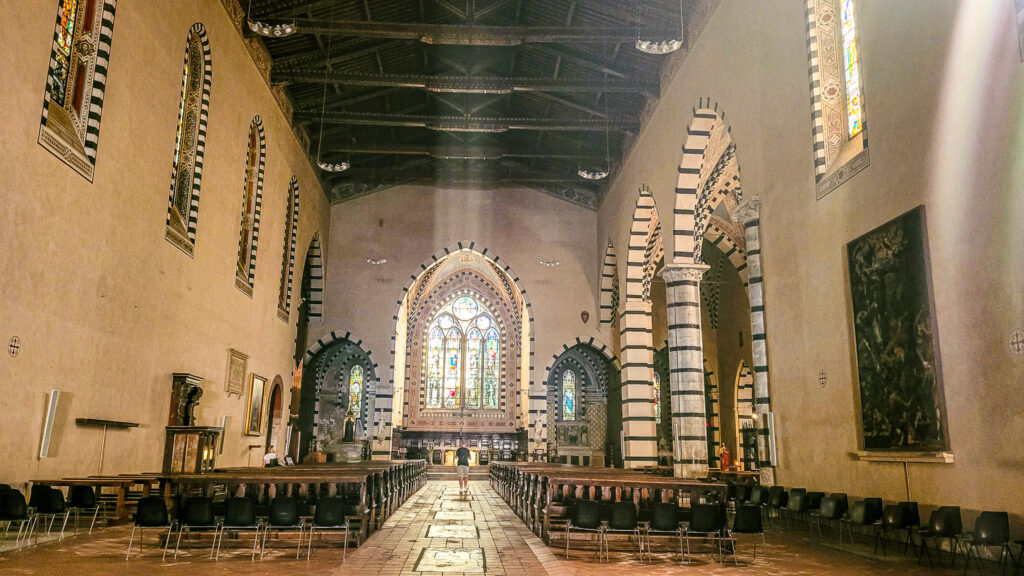
Piazza dei Cavalieri
The Piazza dei Cavalieri is surrounded by a variety of striking buildings, each with their own unique story to tell. The Palazzo della Carovana, also known as the Palace of the Caravan, is one of the most prominent buildings on the square. It was built in the 16th century and served as the headquarters for the Order of the Knights of St. Stephen, a military order founded by the Grand Duke of Tuscany. The facade of the palace is decorated with sculptures that depict various historical figures and events, including a statue of Cosimo I de’ Medici, the first Grand Duke of Tuscany and founder of the order.
Church of Santo Stefano dei Cavalieri
Another building worth mentioning is the Church of Santo Stefano dei Cavalieri. It’s a beautiful church with an impressive dome, built in the Baroque style. The church was originally built in the 13th century but was reconstructed in the 16th century after it was destroyed by fire. Inside, you will find a stunning fresco by the famous Italian painter Giorgio Vasari.
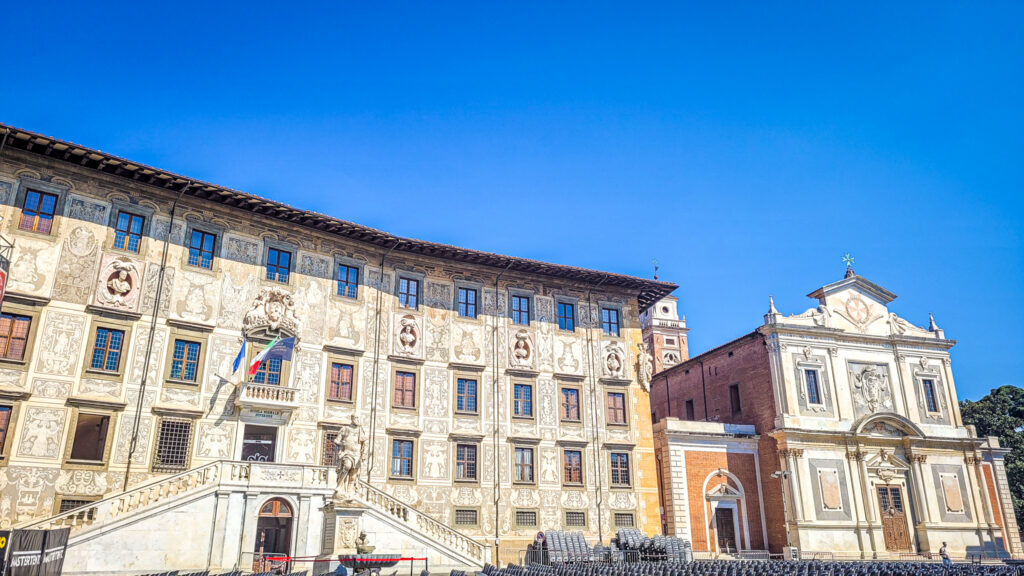
Statue of Cosimo I de’ Medici
One of the most interesting stories of Piazza dei Cavalieri is its transformation from a centre of power for the Knights of St. Stephen to a hub for political activism during the 1960s. The square became a hub for student protests against the government and a symbol of anti-establishment sentiment. The statue of Cosimo I de’ Medici, which once stood as a symbol of power and authority, was even covered with a red cloth by protesters as a sign of rebellion.
Another important aspect of the Piazza dei Cavalieri’s history is its central role in the cultural and social life of Pisa. Across from Palazzo della Carovana, you will find the historic Scuola Normale Superiore, one of Italy’s most prestigious universities. The building is a perfect example of 18th-century architecture and is surrounded by a small garden. Students from the university often meet up in the square to socialize and relax.
Orto botanico di Pisa
The history of Orto botanico di Pisa dates back to the Renaissance period. The Medici family built the garden as a site for cultivating medicinal plants and herbs. As the garden’s fame grew, explorers from across the world contributed to its thriving collection of exotic flora. Today, visitors can witness the botanical garden’s cultural significance as they explore the various sections of the garden. Among the most popular sections are the historical medicinal garden, the arboretum, the Mediterranean collection, and the botanical museum.
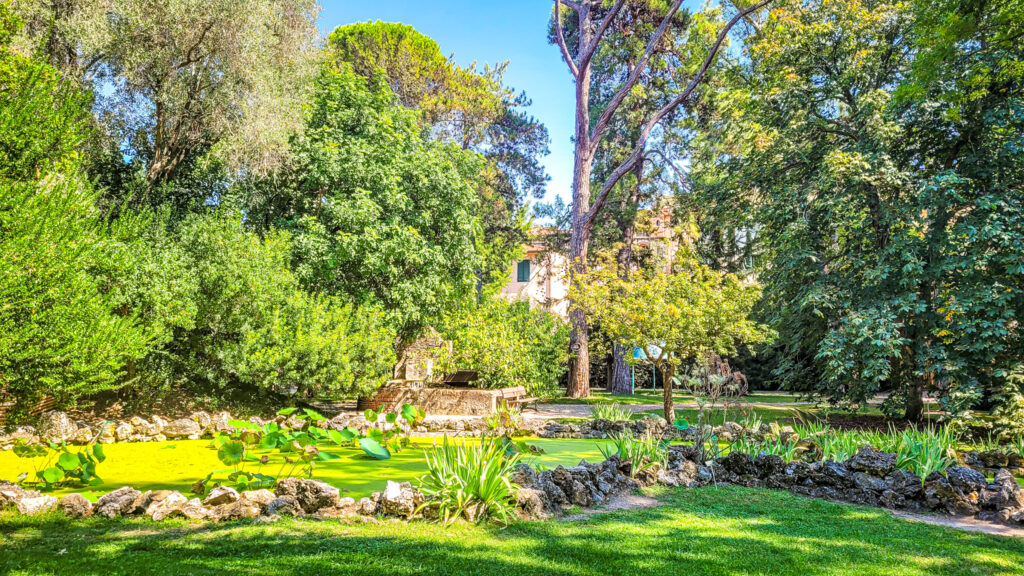
Architecture
The architecture of Orto botanico di Pisa is equally impressive, and a testament to the amazing craftsmanship of the bygone era. Walking through the garden, visitors can notice a blend of styles ranging from medieval, Renaissance, Baroque, and Neoclassic. Among the garden’s highlights is the circular Botanical Theatre. It was built in 1591 and served as a site for scientific lectures and presentations. The complex also houses a beautiful greenhouse, designed by architect Luigi Vicentini, which features a stunning iron and glass structure.
Aside from its historical and architectural significance, Orto botanico di Pisa is also a haven for nature loving visitors. The garden houses several exotic plants like the coffee tree, the raffia palm, and the ginkgo biloba, making it an exciting location for botanists and garden enthusiasts. The garden’s water features also provide a peaceful atmosphere that is perfect for relaxation and meditation.
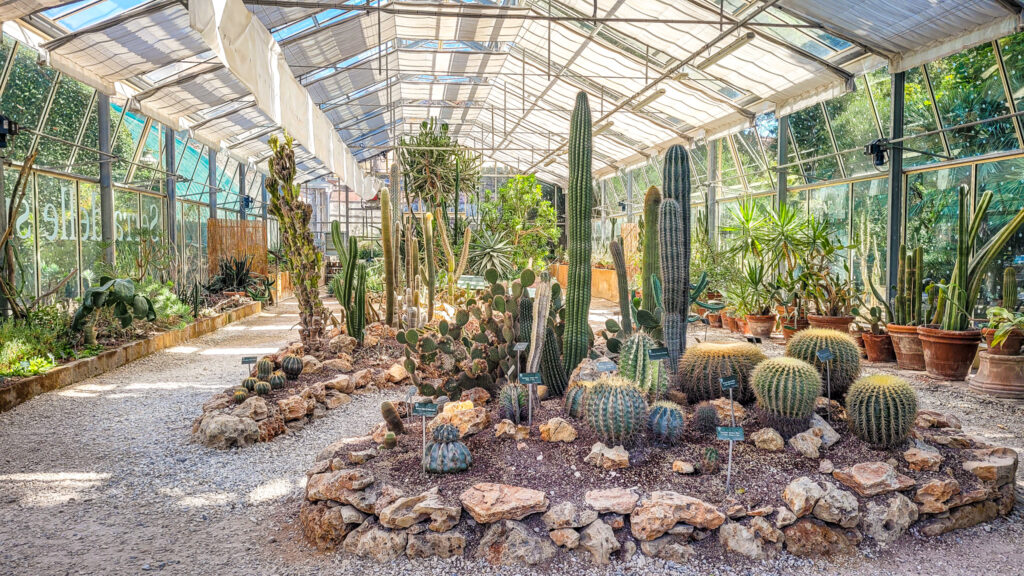
Museum
Another area of interest in Orto botanico di Pisa is the botanical museum, which houses a collection of natural science artifacts and specimens. The museum features fascinating exhibits, including a vast collection of botanical drawings, rare plant specimens, and scientific equipment used in various botanical experiments.
San Michele in Borgo
History of San Michele in Borgo
San Michele in Borgo was first built in the 10th century as a Romanesque Church to serve the religious needs of merchants hailing from the nearby Holy Roman Empire. The present building was constructed over the previous structure during the 12th and 13th centuries. The architecture of the building evolved from traditional Romanesque to Gothic. The church, a former Benedictine monastery, has architectural and symbolic references to the Pisan and Lombard schools of artistry.
Interior Architecture of San Michele in Borgo
The interior of the church features a nave and two aisles. The impressive arches in the nave, supported by slender piers, give the illusion of a higher ceiling. The arches in the aisles show frescoes dating back to the 12th century, each telling a different biblical story. The solemn Stations of the Cross depicts the final moments of Jesus Christ’s life and death. The highlight of the interior is the Ambrosian Choir, an octagonal chapel with frescoes and ornate Gothic details.
Exterior Architecture of San Michele in Borgo
When it comes to the church’s exterior, the facade is plain compared to the intricacy of the interior. You can’t miss the beautiful rose window and stunning arches decorated with 13th-century sculptures, among them the seven theological virtues and the figures of the Old Testament Prophets. The stunning marble pulpit, added to the church in the 12th century, is an example of Pisan Romanesque and Lombard craftsmanship.
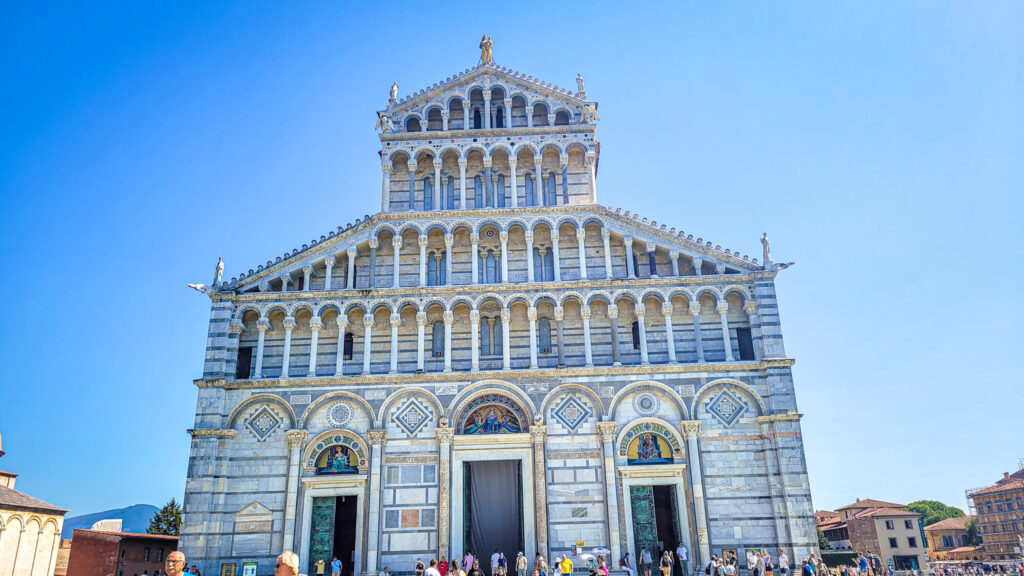
Interesting Facts
The Baptism of Christ, the painting by Andrea del Verrocchio, was originally located in the San Michele in Borgo church. Later, the painting was moved to the Uffizi Gallery in Florence. The magnificent organ inside the church was constructed in 1591 by Tuscan master Orazio Cecci. The organ’s remarkable acoustics still attract organists and music lovers from all around the world.
Lungarni di Pisa
The Lungarni di Pisa is divided into two sections: the Left Bank and the Right Bank. The Left Bank (Lastra, Tramontana, and Mezzogiorno) runs from the Ponte della Fortezza to the Ponte di Mezzo. The Right Bank (San Antonio, San Martino, and Santa Maria) goes from Ponte della Vittoria to the seaside resort of Marina di Pisa. Start your journey by crossing the Ponte di Mezzo from the city centre to the Left Bank.
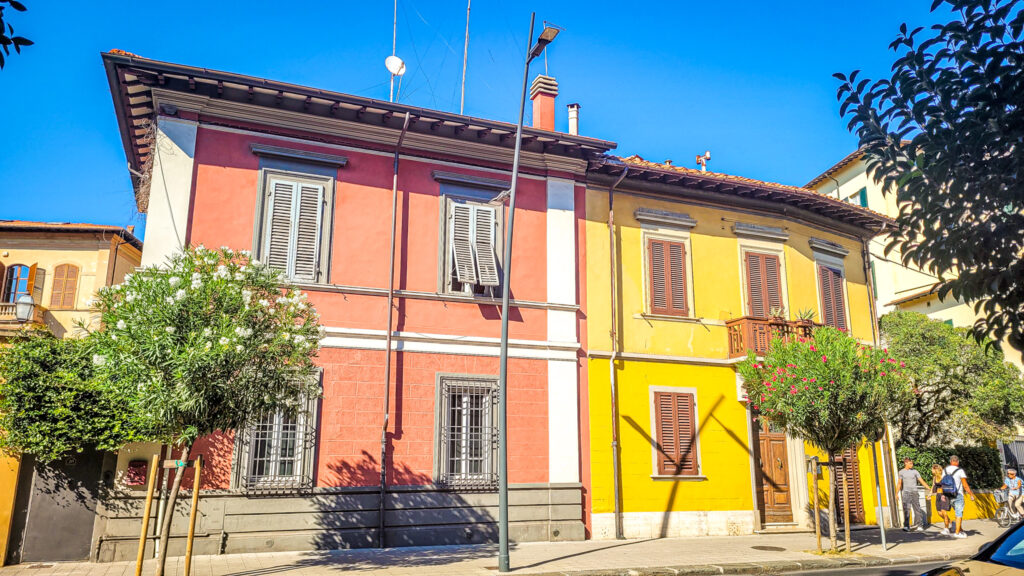
Palaces, churches and bridges
The Lungarni di Pisa is dotted with beautiful palaces, churches, and bridges that are a testament to the city’s rich history and architecture. From the magnificent Palazzo Blu, which houses a stunning collection of modern and contemporary art. To the 12th-century Romanesque church of San Paolo a Ripa d’Arno, which has impressive frescoes. Don’t miss the picturesque Ponte di Mezzo, built in the 14th century, which offers stunning views of the city and connects the two banks of the River Arno.
Architectural styles
As you explore the Lungarni di Pisa, you’ll notice the distinct architectural styles that represent different periods in the city’s history. From the Gothic-style Santa Maria della Spina church to the Renaissance-style Palazzo Gambacorti. The Lungarni also offers stunning examples of the Baroque and Neoclassical styles, such as the grandiose Palazzo Toscanelli. This was once the residence of the famous astronomer Galileo Galilei.
The Lungarni di Pisa is a great opportunity to experience the local culture and lifestyle. Take a stroll along the tree-lined pathways, stop by one of the many cafes or restaurants along the streets, and watch the locals go about their daily lives. Don’t forget to stop by the artisan shops. Here you can pick up some beautiful handmade souvenirs and gifts.
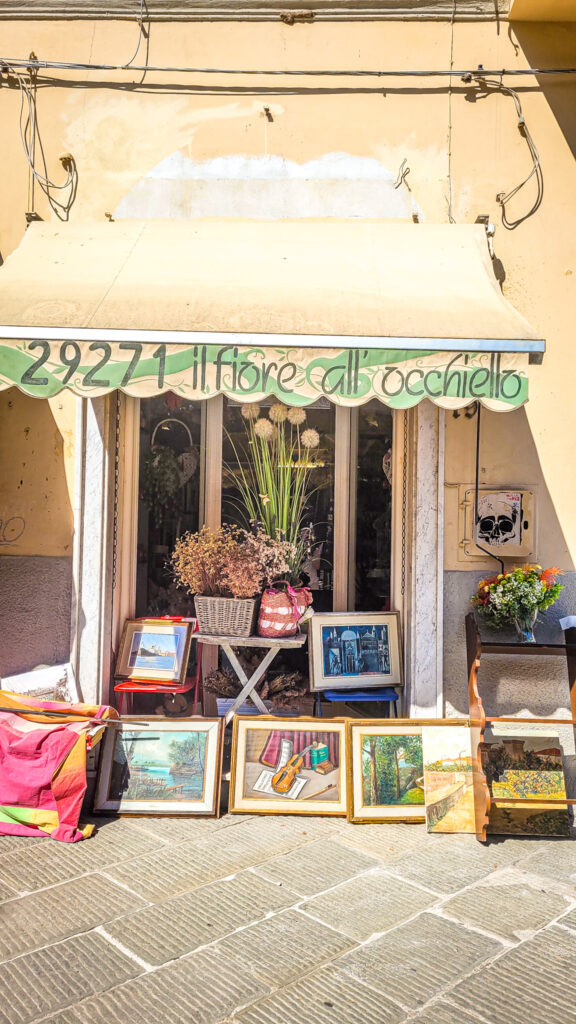
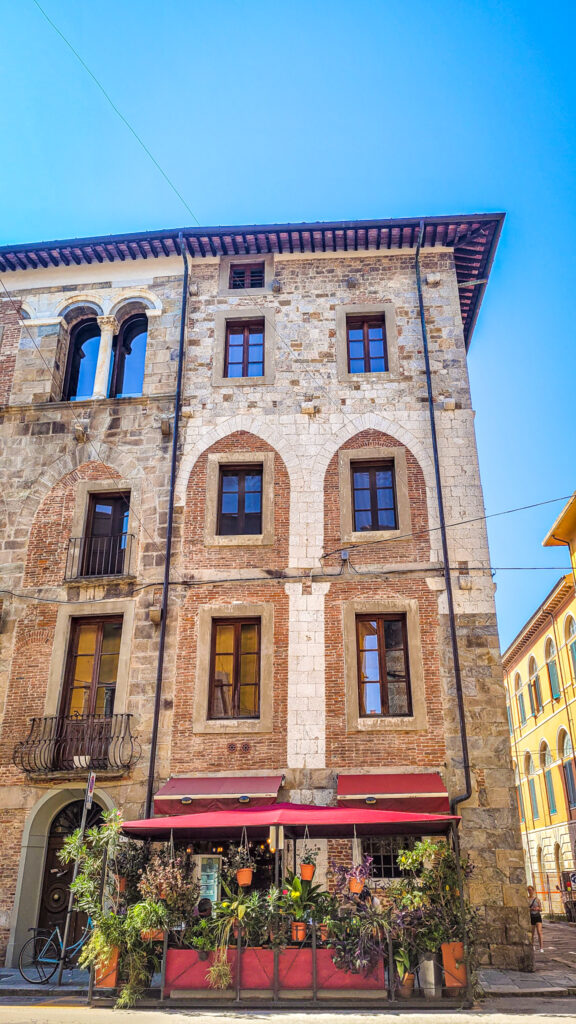
Museo nazionale di San Matteo
The Museo nazionale di San Matteo is located in a former Benedictine convent. The convent was founded in the 11th century. Over the years, the building went through several renovations and expansions, resulting in an eclectic mix of architectural styles. The museum’s courtyard, for example, features a stunning Renaissance loggia. The galleries are decorated with Gothic and Baroque elements. In the Sala delle Maioliche, you’ll find beautiful tiles from the Middle Ages. And the ceiling of the Sala della Carte Geografiche is covered with painted maps.
One of the most impressive sections of the museum is the Gallery of Medieval Art. It showcases masterpieces from the 12th to the 14th centuries. You’ll find works by Pisan artists such as Francesco Traini and Andrea Pisano, as well as stunning panel paintings and sculptures from across Tuscany and beyond. In the Sala degli Avori, you’ll be amazed by ivory carvings that reveal the high level of craftsmanship achieved in the Middle Ages.
Another highlight of the museum is the collection of Renaissance and Baroque art, which includes works by artists such as Jacopo Ligozzi and Giovanni Lanfranco. The Sala delle Armi, or Armory, displays a wide range of weapons and armor from the 16th to the 18th centuries. The display provides a glimpse into the military history of Tuscany.
The Museo nazionale di San Matteo features several temporary exhibitions throughout the year. It covers a wide range of topics from contemporary art to archaeology. If you’re lucky enough to visit during one of these exhibitions, you’ll have the chance to learn more about the rich cultural heritage of Pisa and Italy.
Tuttomondo
Other monumental highlights to visit are the mural painting of Tuttomondo and Sant’Antonio neighbourhood. Tuttomondo is a monumental mural painting that displays over 30 human and animal figures. All figures and animals are interconnected in an animated and colourful pattern. The figures are outlined in black to create a striking contrast on the white surface. It makes the mural visible from a distance. The vibrant colours used in the Tuttomondo are typical of Keith Haring’s art style, and they represent important themes such as peace, unity, and love. The mural is a visual representation of Haring’s view of the world and his desire to spread a message of hope and optimism through his art.
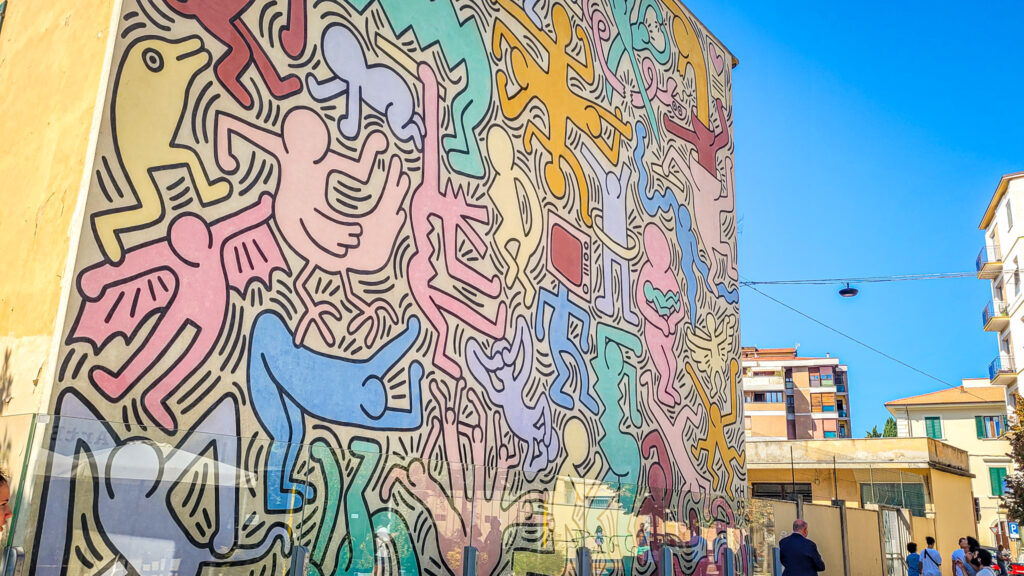
Modern architecture
The architecture of the building where the Tuttomondo is located is itself an interesting aspect of this art installation. The building was originally designed by the famous architect Raffaele Rossi in the early 20th century. At first the building was used as a public school until the mid-90s. The building had fallen into disuse for some time until the City of Pisa decided to restore it and repurpose it as a space for cultural events. The restoration project preserved the original architectural and historical features of the building while integrating modern elements such as large windows and an external staircase. The Tuttomondo perfectly blends in with the lively and dynamic architecture of the building, creating a unique synergy between the natural beauty of the art and the urban environment.
Keith Haring
The history of the Tuttomondo and its arrival in Pisa is an interesting story on itself. Keith Haring was invited to Pisa in 1989 to participate in the “New Walls” project, which aimed at transforming the city’s Grey Urban Areas into works of art. Haring found the perfect spot for his mural on the exterior wall of the former public school in the Sant’Antonio neighbourhood. Haring only needed a week to complete. He was working night and day to create a masterpiece that would become a lasting symbol of his legacy. The mural was officially inaugurated on June 11, 1989, and it has been attracting visitors to Pisa ever since.
The famous Tuttomondo
The Tuttomondo is not only an incredible piece of art, but it also represents an important part of Pisa’s history and cultural identity. The mural has become a pride and joy for the people of Pisa, and it’s often used to represent the city in international events and cultural exchanges. During the years, the mural has been visited and admired by numerous famous artists, including Morrissey, R.E.M., and Lou Reed. It’s also been featured in documentaries and movies and has been used as a backdrop for fashion shows and photo shootings. The Tuttomondo has undoubtedly become one of the most iconic landmarks of Pisa and a symbol of the city’s artistic and cultural wealth.
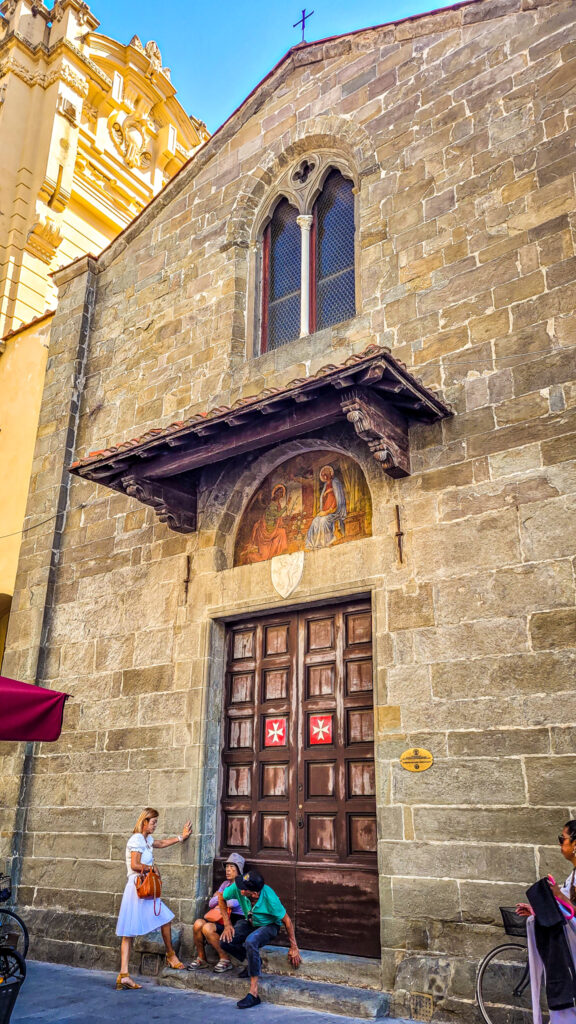
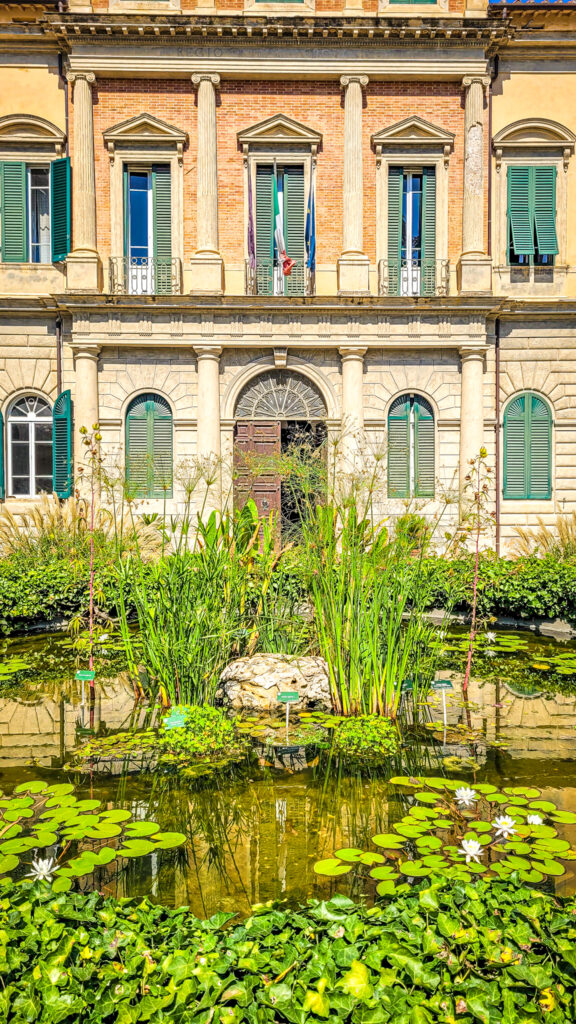
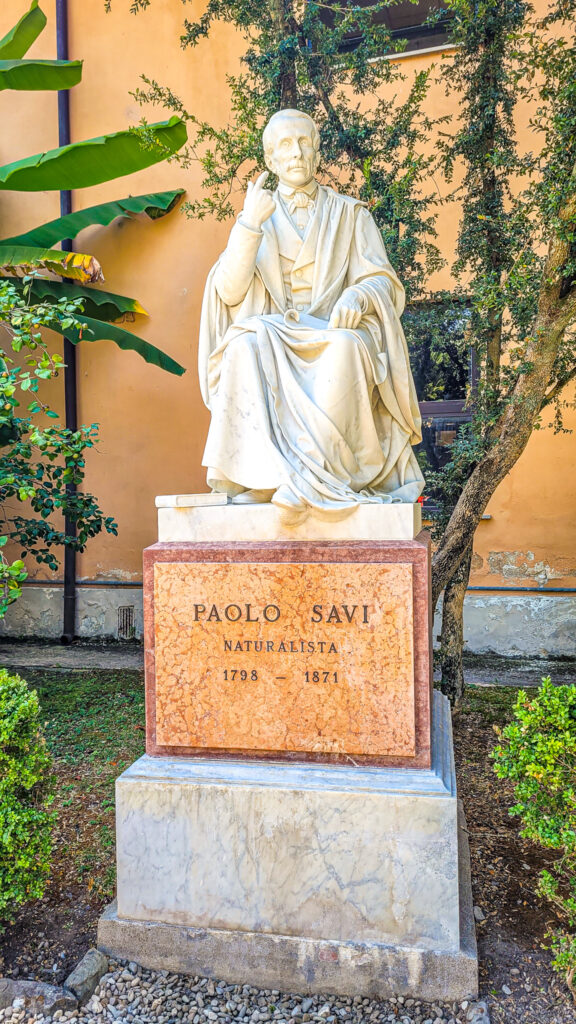
Monumental highlights in Italy
Come and explore the irresistible charm of Italy’s rich historical sites! Take a journey through the monumental highlights of Bologna, one of the most underrated cities in the country. Its history dates back to the Renaissance period, offering an unforgettable cultural and historical experience. And let’s not forget about Modena, a hidden gem where you can escape the crowds and indulge in its unique allure.
When in Rome, you have an incredible opportunity to delve into the captivating history of the Roman Empire. Florence is the capital of Tuscany. Let me tell you, it’s one of the most fascinating destinations in Italy! You’ve got art, architecture, and history all bundled up in this magnificent city. Have you heard about the stunning Duomo and the amazing art collection at the Uffizi Gallery? Trust me, there’s so much to see and explore! In my latest blog post, I’ll be your guide to the most monumental highlights you shouldn’t miss in Florence. Let’s dive in!
And if you fancy a scenic hike with breathtaking views of pristine blue waters, Cinque Terre is the place to be! Discover its history, architecture and culture of this natural wonder in Italy.
Parma is an enchanting destination that will leave you spellbound. With its rich history, culinary delights, and captivating streets. Check out my article to uncover the city’s architectural landmarks, artistic treasures, and other remarkable highlights.
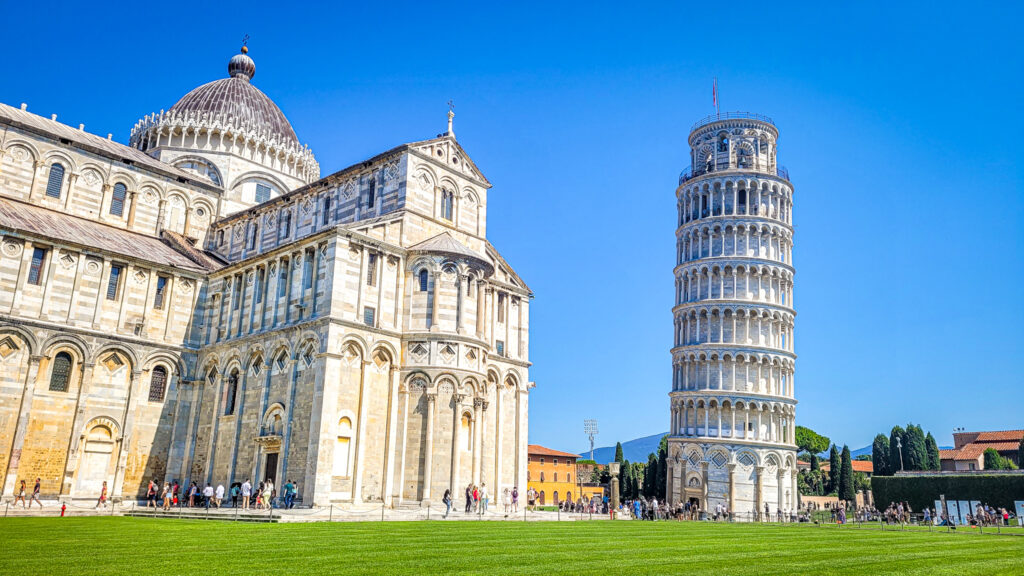


This Post Has 2 Comments
👍
Thank you. Adriana